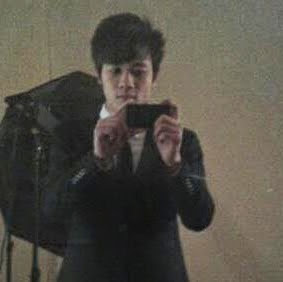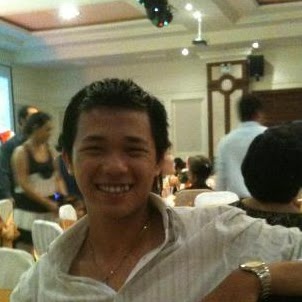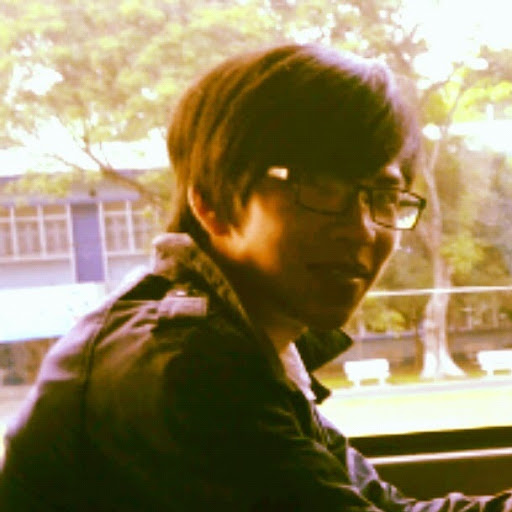Huy C Cao
age ~52
from Lake Jackson, TX
- Also known as:
-
- Huy Cu Cao
- Hau C Cao
- Hiny Cao
Huy Cao Phones & Addresses
- Lake Jackson, TX
- 3313 Janwood Ln, Garland, TX 75044 • (214)2315688
- 1211 Audelia Rd, Dallas, TX 75243 • (214)2315688
- 5580 Harvest Hill Rd, Dallas, TX 75230 • (214)4508380
Us Patents
-
Dipole Antenna
view source -
US Patent:20070241983, Oct 18, 2007
-
Filed:Apr 18, 2006
-
Appl. No.:11/405814
-
Inventors:Huy Cao - Dallas TX, US
Kevin Linehan - Rowlett TX, US
Martin Zimmerman - Chicago IL, US
Xiangyang Ai - Richardson TX, US -
International Classification:H01Q 21/26
-
US Classification:343797000
-
Abstract:A dipole antenna comprising a base; first and second pairs of dipoles positioned in front of the base and arranged around a central region; a first feed line which extends from the base towards the dipoles and splits at a first junction positioned in front of the base into a first pair of feed probes each of which is coupled to a respective one of the first pair of dipoles; and a second feed line which extends from the base towards the dipoles and splits at a second junction positioned in front of the base into a second pair of feed probes each of which is coupled to a respective one of the second pair of dipoles. The feed probes are spaced from the dipoles so as to field-couple with the dipoles. In one embodiment, the first pair of feed probes is positioned on a first side of the dipoles and the second pair of feed probes is positioned on a second side of the dipoles opposite to the first side. In another embodiment, the dipoles are printed on a PCB.
-
Dual-Beam Sector Antenna And Array
view source -
US Patent:20110205119, Aug 25, 2011
-
Filed:Nov 12, 2009
-
Appl. No.:13/127592
-
Inventors:Igor Timofeev - Dallas TX, US
Martin Zimmerman - Chicago IL, US
Huy Cao - Garland TX, US -
International Classification:H01Q 21/08
H01Q 1/24
H01Q 3/24
G01S 13/00 -
US Classification:342373
-
Abstract:A low sidelobe beam forming method and dual-beam antenna schematic are disclosed, which may preferably be used for 3-sector and 6-sector cellular communication system. Complete antenna combines 2-, 3- or -4 columns dual-beam sub-arrays (modules) with improved beam-forming network (BFN). The modules may be used as part of an array, or as an independent 2-beam antenna. By integrating different types of modules to form a complete array, the present invention provides an improved dual-beam antenna with improved azimuth sidelobe suppression in a wide frequency band of operation, with improved coverage of a desired cellular sector and with less interference being created with other cells. Advantageously, a better cell efficiency is realized with up to 95% of the radiated power being directed in a desired cellular sector.
-
Dual-Beam Sector Antenna And Array
view source -
US Patent:20230018326, Jan 19, 2023
-
Filed:Sep 26, 2022
-
Appl. No.:17/952521
-
Inventors:- Hickory NC, US
Martin L. Zimmerman - Chicago IL, US
Huy Cao - Garland TX, US
Yanping Hua - Suzhou, CN -
International Classification:H01Q 3/26
H01Q 3/30
H01Q 25/00
H01Q 1/24 -
Abstract:A low sidelobe beam forming method and dual-beam antenna schematic are disclosed, which may preferably be used for 3-sector and 6-sector cellular communication system. Complete antenna combines 2-, 3- or -4 columns dual-beam sub-arrays (modules) with improved beam-forming network (BFN). The modules may be used as part of an array, or as an independent 2-beam antenna. By integrating different types of modules to form a complete array, the present invention provides an improved dual-beam antenna with improved azimuth sidelobe suppression in a wide frequency band of operation, with improved coverage of a desired cellular sector and with less interference being created with other cells. Advantageously, a better cell efficiency is realized with up to 95% of the radiated power being directed in a desired cellular sector.
-
Dual-Beam Sector Antenna And Array
view source -
US Patent:20200381821, Dec 3, 2020
-
Filed:Aug 20, 2020
-
Appl. No.:16/998558
-
Inventors:- Hickory NC, US
Martin L. Zimmerman - Chicago IL, US
Huy Cao - Garland TX, US
Yanping Hua - Suzhou, CN -
International Classification:H01Q 3/26
H01Q 3/30
H01Q 25/00
H01Q 1/24 -
Abstract:A low sidelobe beam forming method and dual-beam antenna schematic are disclosed, which may preferably be used for 3-sector and 6-sector cellular communication system. Complete antenna combines 2-, 3- or -4 columns dual-beam sub-arrays (modules) with improved beam-forming network (BFN). The modules may be used as part of an array, or as an independent 2-beam antenna. By integrating different types of modules to form a complete array, the present invention provides an improved dual-beam antenna with improved azimuth sidelobe suppression in a wide frequency band of operation, with improved coverage of a desired cellular sector and with less interference being created with other cells. Advantageously, a better cell efficiency is realized with up to 95% of the radiated power being directed in a desired cellular sector.
-
Dual-Beam Sector Antenna And Array
view source -
US Patent:20180062258, Mar 1, 2018
-
Filed:Oct 19, 2017
-
Appl. No.:15/787782
-
Inventors:- Hickory NC, US
Martin L. Zimmerman - Chicago IL, US
Huy Cao - Garland TX, US
Yanping Hua - Jiangsu, CN -
International Classification:H01Q 3/26
H01Q 1/24
H01Q 3/30
H01Q 25/00
H01Q 3/40
H01Q 3/28
H01Q 21/24
H01Q 25/02
H01Q 21/06 -
Abstract:A low sidelobe beam forming method and dual-beam antenna schematic are disclosed, which may preferably be used for 3-sector and 6-sector cellular communication system. Complete antenna combines 2-, 3- or -4 columns dual-beam sub-arrays (modules) with improved beam-forming network (BFN). The modules may be used as part of an array, or as an independent 2-beam antenna. By integrating different types of modules to form a complete array, the present invention provides an improved dual-beam antenna with improved azimuth sidelobe suppression in a wide frequency band of operation, with improved coverage of a desired cellular sector and with less interference being created with other cells. Advantageously, a better cell efficiency is realized with up to 95% of the radiated power being directed in a desired cellular sector.
License Records
Huy Xuan Cao
Address:
9944 Walnut St APT 1038, Dallas, TX 75243
Phone:
(469)2316361
License #:
1198862 - Active
Category:
Cosmetology Manicurist
Expiration Date:
Mar 25, 2018
Resumes

Huy Cao
view source
Huy Cao
view source
Huy Cao
view source
Huy Cao
view source
Stress Engineer At D3 Technologies
view sourceLocation:
Dallas/Fort Worth Area
Industry:
Aviation & Aerospace
Medicine Doctors

Huy L. Cao
view sourceSpecialties:
Family Medicine
Work:
UC Davis Medical GroupRocklin Placer Center For Health
550 W Rnch Vw Dr STE 2005, Rocklin, CA 95765
(916)2955700 (phone), (916)2955764 (fax)
550 W Rnch Vw Dr STE 2005, Rocklin, CA 95765
(916)2955700 (phone), (916)2955764 (fax)
Education:
Medical School
University of California, Davis School of Medicine
Graduated: 1997
University of California, Davis School of Medicine
Graduated: 1997
Procedures:
Arthrocentesis
Destruction of Benign/Premalignant Skin Lesions
Electrocardiogram (EKG or ECG)
Hearing Evaluation
Skin Tags Removal
Vaccine Administration
Destruction of Benign/Premalignant Skin Lesions
Electrocardiogram (EKG or ECG)
Hearing Evaluation
Skin Tags Removal
Vaccine Administration
Conditions:
Acne
Acute Pharyngitis
Acute Upper Respiratory Tract Infections
Allergic Rhinitis
Attention Deficit Disorder (ADD)
Acute Pharyngitis
Acute Upper Respiratory Tract Infections
Allergic Rhinitis
Attention Deficit Disorder (ADD)
Languages:
English
Description:
Dr. Cao graduated from the University of California, Davis School of Medicine in 1997. He works in Rocklin, CA and specializes in Family Medicine. Dr. Cao is affiliated with Rideout Regional Medical Center and UC Davis Medical Center.

Huy Le Cao
view sourceSpecialties:
Family Medicine
Education:
University of California at Davis (1997)
Googleplus

Huy Cao
Work:
Cty 2 cột - Thuyền trưởng (2010-2025)
Education:
DH hang hai Hai Phong - Lái tàu
About:
@.@
Tagline:
Anh khac hay em khac

Huy Cao
Education:
Open University

Huy Cao
Education:
đại họcbách khoa

Huy Cao

Huy Cao

Huy Cao

Huy Cao

Huy Cao

Huy Cao
view sourceHuy Cao ang trn Facebook. Tham gia Facebook kt ni vi Huy Cao v nhng ngi khc m c th bn bit. Facebook trao cho mi ngi quyn chia ...
Youtube
Get Report for Huy C Cao from Lake Jackson, TX, age ~52

![[HD] Hn Gp Li Em - Lm Chn Huy [HD] Hn Gp Li Em - Lm Chn Huy](https://i.ytimg.com/vi/HAP6IZhPb6Y/0.jpg)



![BTT '09 [vietsub] 26A BTT '09 [vietsub] 26A](https://i.ytimg.com/vi/YNwMW8o5gFU/0.jpg)